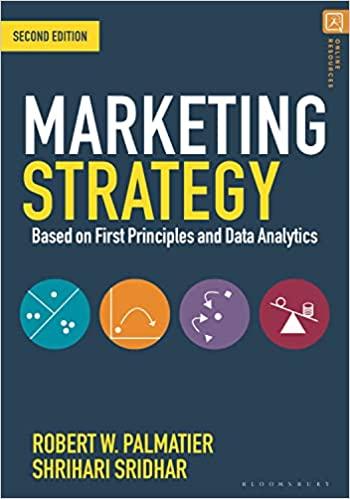Kreyers Froyo had built up a reputation as one of Americas favorite frozen yogurt chains. Founded in
Question:
Kreyers Froyo had built up a reputation as one of America’s favorite frozen yogurt chains. Founded in 2006 with $50,000 in startup capital, Kreyers had grown from one location to 325 locations in a span of six years, covering almost all major communities in America. With growing health consciousness, Kreyers marketed itself as a substitute for unhealthy ice cream and found the happy middle of having fewer calories per serving and lower sugar, while offering rich and unique favors. The major segments tended to be high school students and college-going adults, while young families came in during weekends as well as after sports activities on weekdays.
Most customers initially came to Kreyers stores to experiment with frozen yogurt instead of regular ice cream, but they tended to make repeated visits due to the friendly service scape, familial atmosphere, and new favors that Kreyers experimented with every two months.
Customers also liked the self-serve model where they could sample the frozen yogurt of their choice, choose toppings of their liking, and eat inside or outside the store. Kreyers was strategic with its choice of toppings, offering some decadent chocolate options while maintaining mostly organic fruit options. This allowed Kreyers to also attract the customer who might have typically visited an ice-cream outlet, and to build a relationship through offering a great product and high service quality.
Having found the profitable space of appealing to a niche audience, Kreyers was financially exceptional from 2011 to 2015, growing same-store sales between 8% and 14% a year across stores. However, with the large untapped opportunity for frozen yogurt, competitors began eyeing a promising opportunity. Grocery stores increased aisle space for frozen yogurt, and Kreyers saw that every location across the nation saw three to four new national and local chains enter the market in the space of five years. As a result, Kreyers’ same-store sales grew more modestly at 3%–4% between 2017 and 2019. Industry reports also claimed that the frozen yogurt industry was approaching maturation with a need to bring “something special to the experience.”
Given the slowdown in sales growth, Kreyers’ strategy meeting was contentious and brought in diverse untested ideas on where the company should go next. Clarissa Smeal, vice president of sales, felt the need for a price reduction: “We are very healthy at 65% market share, but risk losing further share if we lose touch with our customers.” According to Clarissa, the price reduction was simply to acknowledge that the market was maturing. She stated: “We simply can’t charge $7.99 per cup and get away with it.”
Kreyers’ marketing mix problem is representative of the basic, perennial issue facing managers: all resources are limited. Understanding the performance impacts of cutting price versus investing in diferent advertising channels is critical, and efective marketing strategy must manage the ever-present resource trade-ofs that represent MP#4.
Texiera considered a third option: resource allocation. Perhaps there was a middle ground where Kreyers did not increase advertising or reduce price but better allocated its advertising across channels. With a large portion of its customers being younger, Texiera always felt it should be spending more on online advertising and less on national advertising, but he did not have the proof.
Kreyers had never really studied how the company was investing in advertising. Kreyers advertised across nearly 11 media outlets, broadly classifed as national, local, and online advertising. Teixeira knew from a recent research report that these types of advertising varied widely. As one report stated
● National advertising is best suited for targeting a large mass audience (i.e., the quantity of reach dimension) because most national media are well known and considered credible and familiar. Targeting a mass audience means low specificity and high generality, which could limit the relevance of national advertising’s reach. National advertising is useful to convey simple product concepts, making it suitable for brandbuilding purposes.
● Regional advertising is for targeting small but well-defined market segments, and thus highly relevant to specific local demographics and lifestyles. Because there is extreme fragmentation in regional media (e.g., up to 60 local radio stations), it could lead to a low-threshold quantity of reach for the medium.
● With online advertising, quantity of reach is technically ubiquitous but limited by the volume of website visits. Because advertisers can track prior- and post-impression online behaviors of their consumers, relevance could be superior to offline counterparts. .......
QUESTIONS
1. Based on reviewing the data, obtain the means of national, local, and online advertising.
2. Based on reviewing the data, obtain the means of price.
3. Build a log-log model that links sales to price, national advertising, regional advertising, and online advertising.
4. Based on your understanding of the estimates:
• Does price affect sales? Should Kreyers increase price, decrease price, or retain price?
• Do national, local, and online advertising afect sales? Should Kreyers keep the same allocation or change the allocation in any way?
Step by Step Answer:






